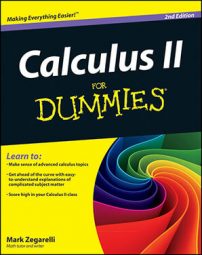The anti-differentiation rules for integrating greatly limit how many integrals you can compute easily. In many cases, however, you can integrate any polynomial in three steps by using the Sum Rule, Constant Multiple Rule, and Power Rule.
Here’s how:
Use the Sum Rule to break the polynomial into its terms and integrate each of these separately.
The Sum Rule for integration tells you that integrating long expressions term by term is okay. Here it is formally:

Use the Constant Multiple Rule to move the coefficient of each term outside its respective integral.
The Constant Multiple Rule tells you that you can move a constant outside of a derivative before you integrate. Here it is expressed in symbols:

Use the Power Rule to evaluate each integral. (You only need to add a single C to the end of the resulting expression.)
The Power Rule for integration allows you to integrate any real power of x (except –1). Here’s the Power Rule expressed formally:

Here’s an example. Suppose that you want to evaluate the following integral:
Break the expression into four separate integrals (Sum Rule):

Move each of the four coefficients outside its respective integral (Constant Multiple Rule):

Integrate each term separately (Power Rule):


